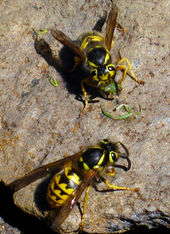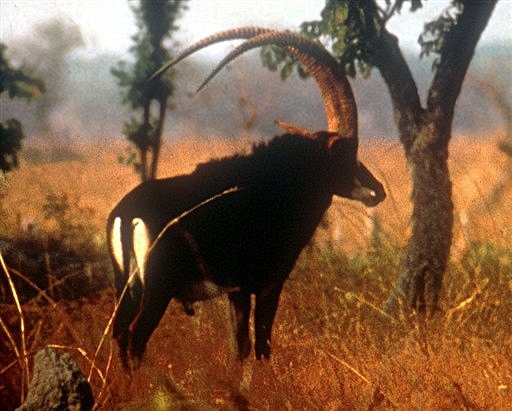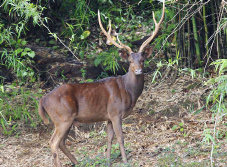
© Erin Wilson Invasive western yellowjacket wasps in Hawaii (above, a wasp eats an unidentified insect near another wasp) are munching their way through an "astonishing diversity" of creatures, from caterpillars to ring-necked pheasants.
Attacking from nests as big as pickup-truck beds, invasive western yellowjacket wasps in Hawaii are munching their way through an "astonishing diversity" of creatures, from caterpillars to pheasants, a new study says.
Adult yellowjackets consume only nectar. But they kill or scavenge prey to deliver needed protein to their growing broods.
"They basically just carry it in their mandibles - you see them flying with their balls of meat," said lead study author Erin Wilson, who just finished her Ph.D. at the University of California, San Diego.
In their native habitat in the western U.S., the wasps die off in winter. But in Hawaii the wasps survive the winter, possibly due to mild year-round temperatures or subtle genetic changes.










